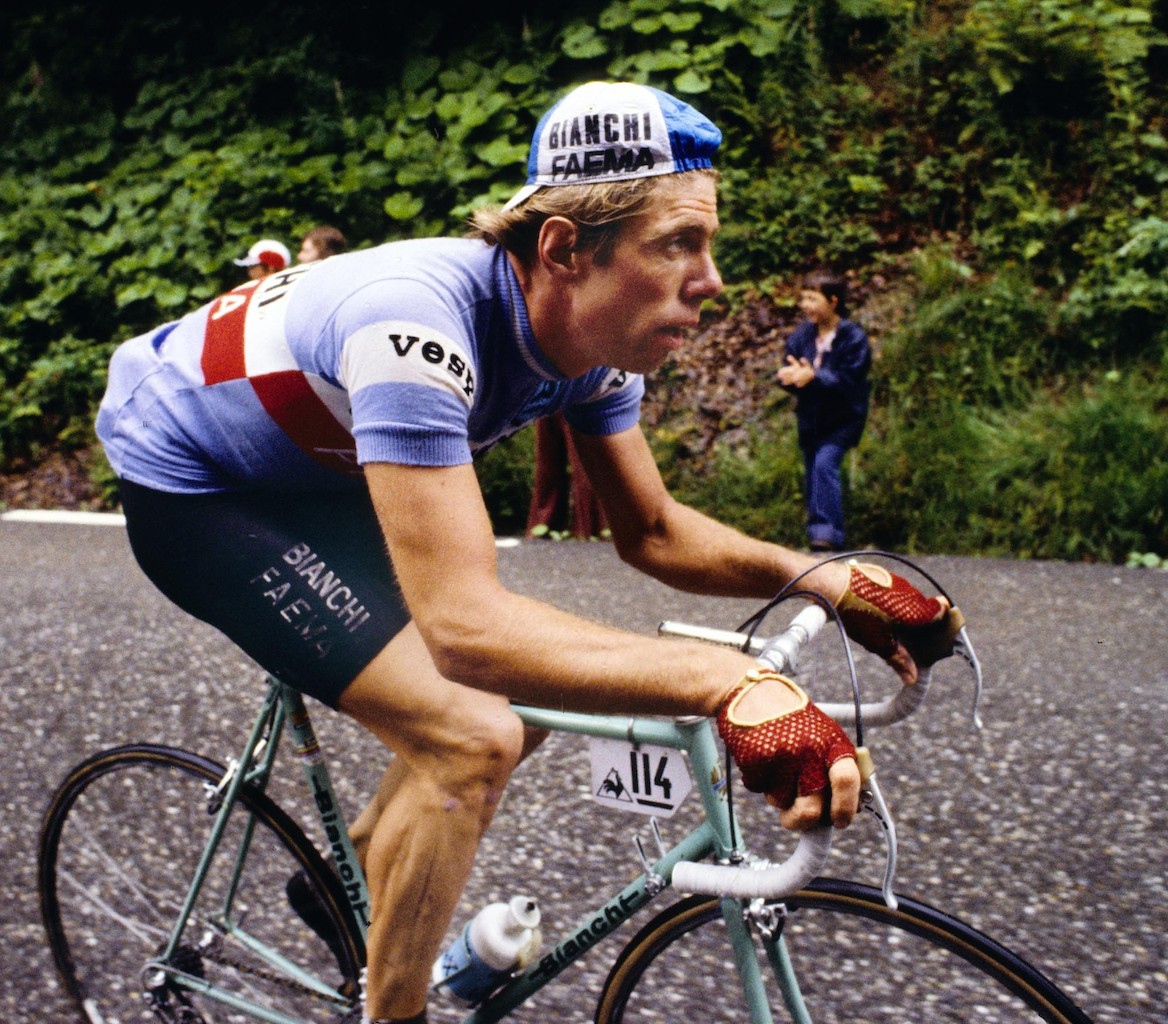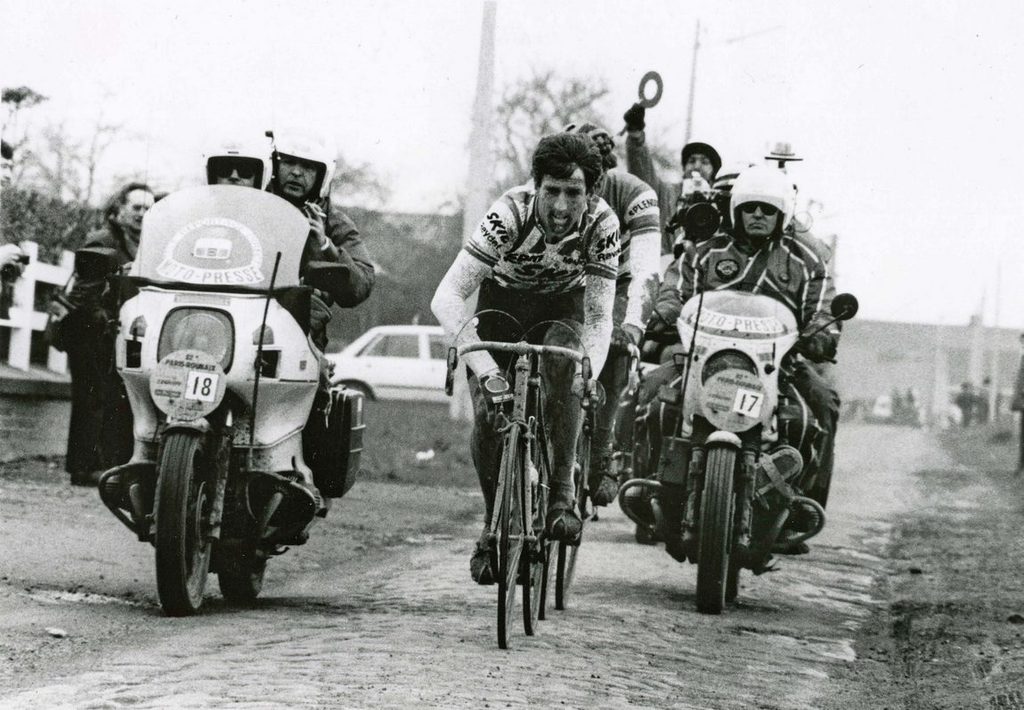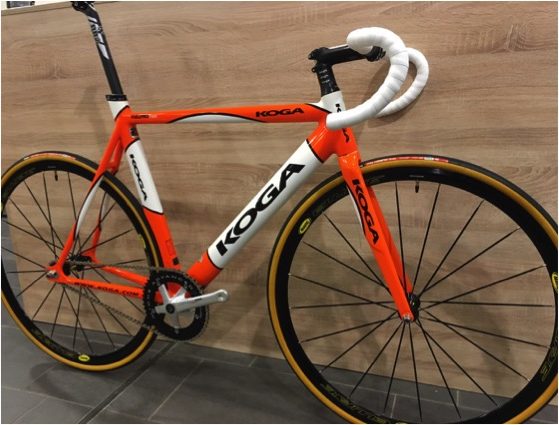Guest Article: Before Thor
@Wiscot is back with another tale from the peloton. This will help us roadies get a fix as we struggle through the short days in the northern hemisphere (and dearth of road cycling news). And most of us shouldn’t complain too much as at least we have more daylight than Thor has right now. Grazie @wiscot.
VLVV- Gianni
Quick. Name a Norwegian cyclist. Ok, I’ll spot you Thor Hushovd, Edvald Boasson Hagen and Alexander Kristoff. After that, things get a little um-ah, right? Ok, I’ll offer up Jostein Willmann, Dag Erik Pedersen, Dag-Otto Lauritzen, Kurt Asle Arvesen and Lars Petter Nordhaug – all quality professionals. But let me tell you, for a small country on the northern edge of Europe with a population of just over 5 million (about the same as Wisconsin), Norway has produced a fine crop of pros over the years but you can start it all with one of the best: Knut Knudsen.
Over his short but stellar career from 1974 to 1981, the big, powerful rider was based in Italy and rode for one team: Bianchi. That’s loyalty. He won six stages of the Giro as well as Tirreno-Adriatico in 1979. He also scored many stage wins and high placing in top-notch races such as Tour de Romandie and the Giro di Sardegna. Between 1979 and 1981 he was deemed the best time-triallist in the world. That was no mean feat in the age of Roy Schuiten, ernard Hinault and Daniel Gisiger. Indeed, he turned his time trial skills to good use on the track winning the individual pursuit gold at the 1972 Munich Olympics and the world pursuit title in 1973 when it was still the preserve of amateurs. Throw in multiple Norwegian championships on the road and track and he was his country’s dominant rider from the late 60s into the early 70s.
However, being based in Italy and riding for an Italian team, it took strength of character and ability to be nominated a team leader as a Norwegian, but Knudsen did it and almost pulled off an astounding win in the Giro in 1979. This was the year when Vincenzo Torriani, the Giro director, really kick started the Francesco Moser-Giuseppe Saronni rivalry. Moser was the older rider from Palù di Giovo in Trentino, Saronni the 21 year old wunderkind from Novara in the Piedmont. Never underestimate the strength (and commercial value) of Italian regional rivalries. Being a big lad, the course was deliberately tailor-made for Moser with five time trials and the worst of the mountains avoided. As both riders were strong against the clock, Torriani set the course and sat back ready to watch the two Italian stars battle it out. It was shameless pandering to the home fans who had seen only two Italian winners since 1970: Fausto Bertoglio in 1975 and Felice Gimondi in 1976. Past winners such as Merckx (1970, 72, 73, 74), Gosta Peterson (1971), Michel Pollentier (1977) and Johan deMuynck (1978) didn’t keep the tifosi engaged in the country’s national tour.
By stage 16 of the 1979 Giro, the duel was down to Knudsen and Saronni. Moser had held pink from the prologue until stage seven but was suffering from conjunctivitis, an ailment that had been plaguing the pro peloton all season and had, in fact, caused the withdrawal of the entire Inoxpran team of Giovanni Battaglin just one day before the race’s start. Saronni took the maglia rosa on stage 8 and was holding on to it with remarkable assurance for one so young. Knudsen had not dropped out of the top three on general classification from the start – always at less than a minute from the race leader – with Moser sitting in third. Instead of Moser and Saronni vying for the win, the last week of the race pitted the short, dark-haired Saronni (riding for SCIC) against the tall, blond Norwegian riding for Bianchi. At the start of the stage things were on a knife edge. Saronni was leading Knudsen by a mere 18 seconds; Moser was a further 61 seconds behind and no real danger to his Italian rival. Knudsen was riding more strongly each day and there was a 44 kilometer time trial to look forward to on stage 19. Things were looking good for the first ever Giro win by a Norwegian.
On the Forcella di Monte Rest, Knudsen attacked. Saronni’s legs couldn’t respond and the Norwegian forged a 30 second lead. Assessing the situation that Saronni was getting tired and believing that a strong time trial in Milan would seal the deal, Knudsen chose not to assert himself and allowed the group – including Saronni – to come together on the descent. It was a massive miscalculation. With 15 kilometers to go Luciano Pezzi, the director of the Magniflex-Famcucine team, drove his car into Knudsen’s rear wheel causing the rider to crash heavily – particularly on his left knee. Thirty long seconds elapsed as the big Norwegian struggled to remount on a fresh bike. With the assistance of teammates Johan DeMuynck and Aldo Donadello, the Bianchi trio took off after the lead group. Then misfortune struck again. Under normal circumstances, a rider in Knudsen’s situation would have been permitted to use the convoy to get back to the head of affairs. Inexplicably, Torriani stopped the cars leaving a gap between Knudsen and the Saronni group, out of which the SCIC rider was now attacking. With four kilometers to go Knudsen, now completely spent from his chase, rejoined the group only for Saronni to attack again and gain 26 seconds by the finish.
Fortunately, the next day was a rest day but Knudsen’s injuries needed more time to heal. He started stage 17 with small bandages covering deep wounds to his knees. The left knee was especially painful. At kilometer 77 he started slipping back through the field, unable to hold the pace, eventually finishing 15 minutes down, determined not to abandon in front of fans who had been so supportive. Remember, everyone knew his injuries were not his fault and he was on an Italian team.
The next stage, the penultimate one to Trento, started without the popular Norwegian. The SCIC team kept all their attention on local boy Moser, allowing Amilcaro Sgalbazzi of Magniflex-Famcucine to take the win. Saronni, not unsurprisingly, won the final time trial and to add insult to injury, won the points prize by a single point from Moser after Visentini squeaked into second place on the day. For Knudsen, the win that seemed so close to his grasp was cruelly snatched away by events beyond his control. He rode the Giro twice more, in 1980 and 81, winning three stages in the latter. Saronni won the overall again in 1983 as reigning world champion.
Could Knudsen have won the 62nd Giro d’Italia? Yes. Had he ruthlessly pressed home his advantage on the Forcella, he would likely have gapped Saronni and avoided the subsequent misfortunes. Should he have won? I think the answer is again yes. We’ve seen a rash of car/moto/bike collisions lately, but this was of a different magnitude. Pezzi was no rookie DS, nor was Torriani a neophyte race director. There’s a strong whiff of Italian collusion to ensure a home country winner. To his eternal credit, Knudsen did not moan or whine about the final result. He was a professional. Today he is still very much engaged with the sport. That’s what makes a champion: enduring adversity and overcoming it with grace and class. Damn fine folks those Norwegians.



Fantastic read, thanks @wiscot!
“Inexplicably” is actually Italian for “here’s what’s going to happen…”
It never ceases to amaze me how those DS guys/support drivers can knock a rider off their mounts without causing serious injury and/or death. Whether deliberately or otherwise.
I like to call them love-taps.
The 2015 season saw an extraordinary amount of them, and particularly in the spring classics, if my memory serves me correctly. Thankfully most if not all lacked the sinister undertones such as in Knudsen’s unfortunate experience. He knew better than to kick up a fuss over it, but he was also the moral victor.
Cool story, bro.
Given Norway and Sweden used to be one country, I’m going to claim these guys as part of my heritage, too. Magnus Backstedt, Gustav Larsson, Emma Johansson – all quality Nords.
@DavyMuur
I do believe that if some other DS hit my rider, whether intentionally or because he wasn’t paying attention, I’d lose my shit.
@Owen
I do believe that I would also lose my shit. Not condoning it in any way, it’s so incredibly dangerous. And it’s especially cruel when it costs a rider a GC or even a stage.
Skål
“Inexplicably, Torriani stopped the cars . . .”
Inexplicably . . . TV helicopter . . . Moser . . . Fignon
@DavyMuur
Don’t worry, didn’t think you did condone hitting people with cars. Most of us in this sport have a natural aversion to hitting other people since we know what it’s like.
Thanks Wiscot. Nice write-up on someone I’d never heard of.
As a nonsense aside: is that a Warren Zevon reference in the photo caption?
@PT
Thanks! As or the Zevon reference? No idea. Ask Gianni – he writes the captions, I just write the stuff underneath . . .
@wiscot
Yeah, it was. I’m such a big Zevon fan that it sneaks into a lot of things.
Great story @wiscot, it’s nice to hear a little about the Giro in December.
Great article. Sort of reminds me of Italian disrespect for any rules for example when the Azurri are leading in a national team soccer match, a common view that the Italians winning is for the better good.
Sums up my view of Italy, an infuriating place which I deeply love and especially the bikes.
@Gianni
I’ll make a mental note to invite you over for a Pina colada at Trader Vics sometime.
Norway is probably the only other country in the world I’ve seriously considered moving to – it is consistently stunning. I’m not surprised they produce strong cyclists, I can’t imagine there are many flat roads. You’d think they’d produce a lot of climbers, but then they tend to be quite big.
I guess that’s why you get big, strong riders who can TT well AND climb well for their weight.
@PT
Or we could go to Lee HO Fook’s and get a big dish of beef chow mein
@Lister
In either case, I’d like to meet his tailor.
Riders of his era (and into the late 80’s) seemed to have more lower leg definition particularly the anterolateral shins. Maybe that’s just perception. Wouldn’t think toe clips would have anything to do with it since you’re turning the pedals the same, but…
Great article, thanks for sharing!
@Ccos
Probably so. They used to push bigger gears/lower cadence on climbs. EPO actually brought about this super high cadence thing. The EPO allowed the riders to ultra develop their cardio endurance, not really their leg muscles, so the high cadence allows them to capitalize on the drug enhanced strength.
Excellent story, great lead photo. Damn, that is one awesome jersey.
No complaining after that? Christ, the majority of today’s pro athletes could learn a thing about shutting up and getting on with it from Knut. So many big fucking babies out there today.
I grew up playing soccer with a Knud.
@PT
Perfect!
great read! Thanks!
@teleguy57
At least his hair was
@Owen
You do not need to, Tommy Prim ended up second in the Giro 1981 and 82 on abianchi
@rikard Appelgren
Tommy Prim you say? Stay tuned!
@wiscot
See? I knew we Swedes had it in us. Ze ozer half of my heritage doesn’t seem to have a problem winning piles of stages, upon which another recent article elaborates.